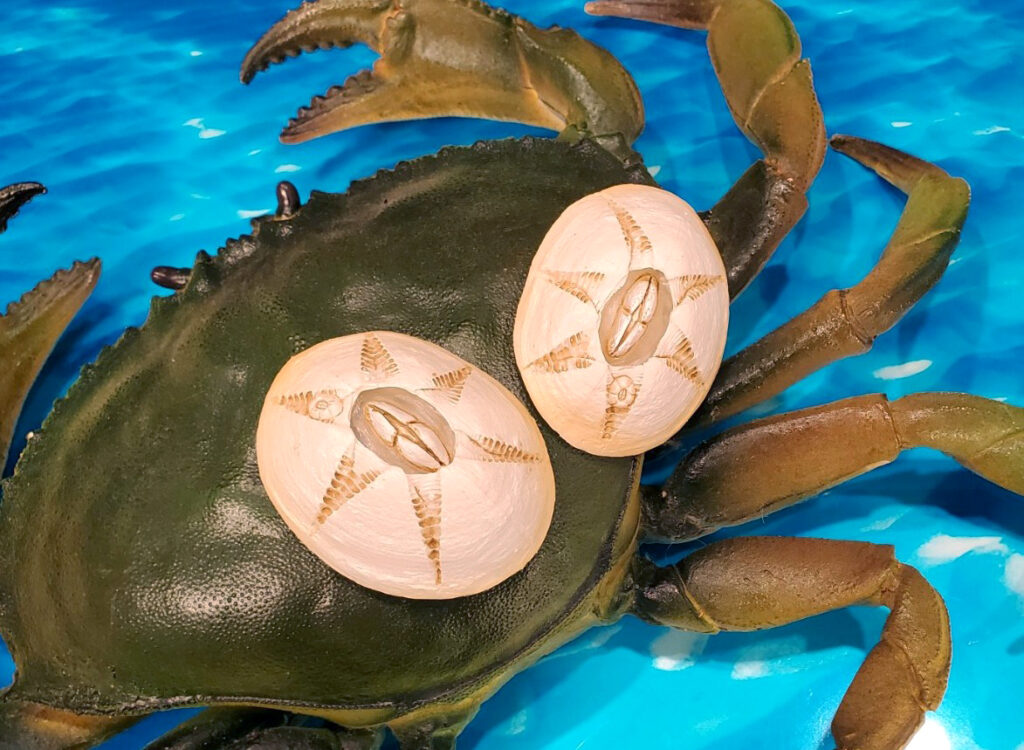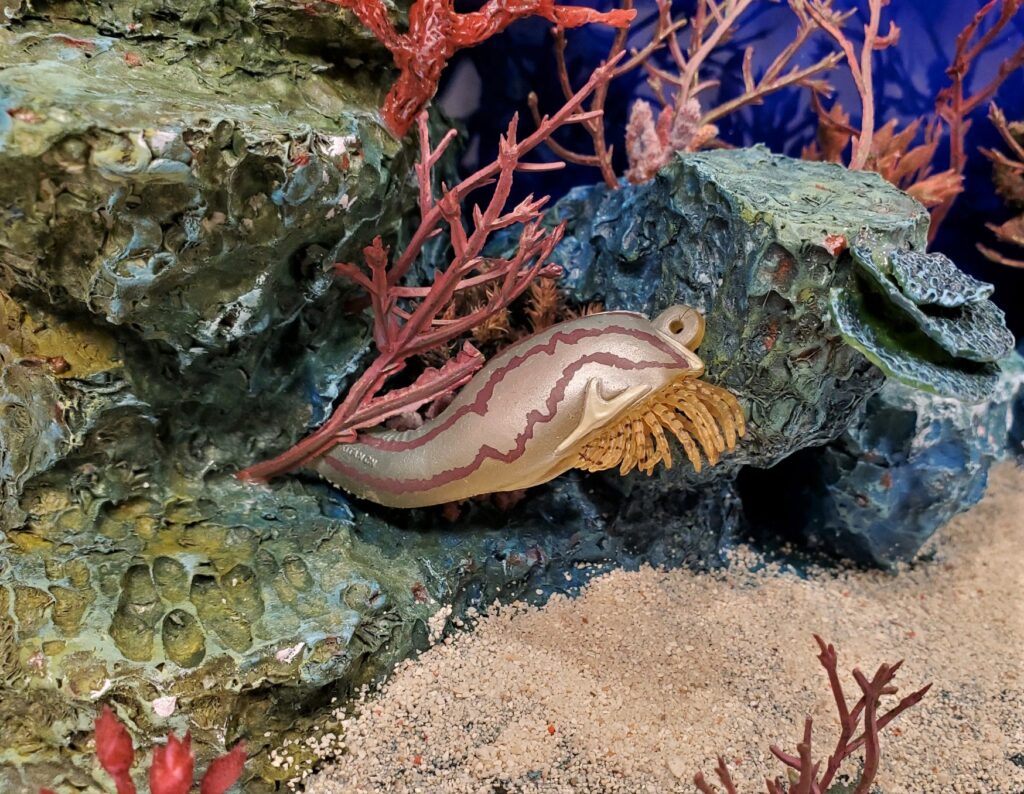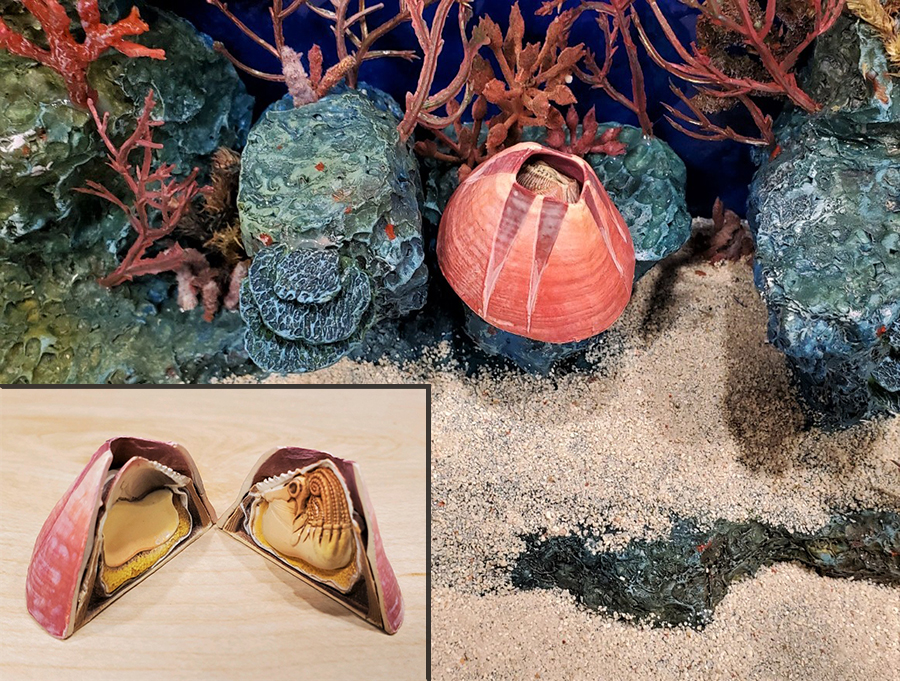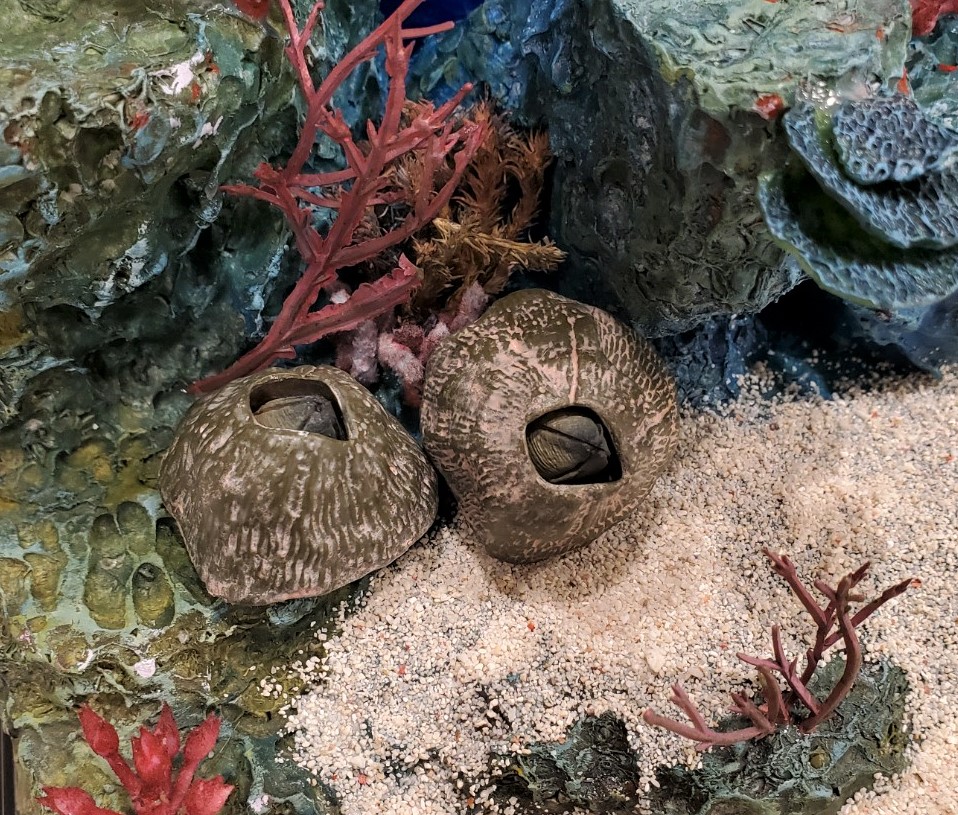Today we will be looking at the complete Barnacles collection that was released by Kitan Club in 2012 as part of the Nature Techni Colour line. The set features 18 figures representing nine species of barnacles. The figures are either magnets, ‘strap’ figures, or are pins designed to be work on clothing or backpacks. To the best of my knowledge, all but one of these are unique in the toy/figure world (not including, of course, barnacles sculpted on whales, sea turtles, etc.). Measurements are provided below, but all appear to be in the 1:1 scale range (to be honest, I suspect most if not all were cast from actual specimens).
Group shot:

On to the figures in alphabetical order by Latin name:
Rostrate barnacle, Balanus rostratus
This species occurs coastally in the North Pacific, usually colonizing rocks and empty mollusk shells. There are four figures of this species in the set. Three are magnet figures that come together to form a small cluster (although the figures do not attach securely) and a fourth that is a duplicate of one of the other three, but as a strap figure. The individual figures range from 3.5-4.0 cm tall.

Japanese gooseneck barnacle, Capitulum mitella
This species occurs coastally in the Indo-Pacific, usually on rocks. The figures are both magnets and measure 5.0 and 6.0 cm tall. These figures are not unique, as in 2020 Toys Spirits released this species in Volume 2 of their Shellfish With a Lid Mascot collection. The reason Toys Spirits would include this barnacle in a collection of otherwise edible mollusks is because C. mitella is harvested for food, as are other Asian gooseneck barnacles.

Turtle barnacle, Chelonibia testudinaria
There are two populations of C. testudinaria, one which lives as a symbiont on sea turtles (especially the loggerhead sea turtle, Caretta caretta) and another that lives primarily on crustaceans, mollusks, and sea snakes. For years, the two populations were considered separate species, with the latter named C. patula. However, morphological and molecular studies show the two populations are conspecific, and the differences in plate morphology is an adaptation to the environment and lifestyle of the particular host. These two figures are 6.0 cm long and represent the same sculpt; one is a magnet and the other is a pin that can be worn on clothing. These two figures also demonstrate a large hermaphroditic individual with a smaller complemental male attached! I photographed these two barnacles on a 1:1 AAA crab; this is not the right host for this morphotype of barnacle, but my options for a turtle symbiont are limited.

Striped goose barnacle, Conchoderma virgatum
This species occurs nearly worldwide in tropical and subtropical oceans and seas. It is a pelagic species, and is usually attached to buoys, ships, driftwood, sea snakes, whales, and large fish. This figure is 5.0 cm long and was sold as a strap figure; it is also made of a softer rubber, unlike the other figures in the collection that are a harder PVC. Like with the C. testudinaria above, my photo does not depict the actual habitat of the barnacle, but again my options were limited.

Fistobalanus albicostatus
These figures were marketed as Amphibalanus albicostatus. This species doesn’t appear to have a common English name. It occurs coastally in East Asia, usually on rocks. The two figures are both magnets, and measure 1.1 and 1.8 cm across their widest points.

Rose barnacle, Megabalanus rosa
This species occurs in the Indo-West Pacific, where it lives on a variety of substrates including rocks and mollusk shells. These two figures represent the same sculpt. One is a pin figure to be worn but the other is quite ingenious, making it probably the most interesting figure in the set; the second figure is cut in half and the internal anatomy of the animal is sculpted on the inside (see inset). The two pieces hold together by internal magnets. In whole, each figure measures 4.0 across its widest point.

Scalpellum stearnsii
This is an unusual species I had some trouble researching biological information on. It appears to live in the Indo-West Pacific and is a sessile organism on rocks and, as shown in the figure, unoccupied mollusk shells, often at lower depths. The total figure is 7.7 cm long; the barnacle is 3.5 cm. The figure was sold as a strap figure.

thatched barnacle, Semibalanus cariosus
This species occurs in the North Pacific, from Japan to the Bering Sea, to Baja California. It lives in the intertidal and subtidal zones, usually attached to rocks, pilings, and other man-made structures. The figures are both magnets, measuring 1.5 and 2.3 cm and are in scale 1:1 albeit for smaller specimens.

Japanese volcano barnacle, Tetraclita japonica
This species is endemic to the coasts of Japan. Also known as the black barnacle, it lives on rocks in the intertidal zone. The two figures are the same sculpt, one a magnet and one a pin, and measure 3.0 cm at the base.

So there we have a review of one of the most taxonomically interesting sets ever made. Species in this set, even if not every figure, are a must for collectors of interesting taxa. The set was retired not long after its release. Ever since Ikimon took over the Nature Techni Colour line, they have been re-releasing a lot of the original Kitan Club figures; however, I do not know if this set was among them (having secured the entire set in 2017, I haven’t felt the need to keep up with it). Japanese auction sites are probably the best chance of finding these, or maybe eBay if you’re lucky.
Disclaimer: links to Ebay and Amazon on the AnimalToyBlog are affiliate links, so we make a small commission if you use them. Thanks for supporting us!




Very cool set! For C.virgatum, I may one day aim to get a 1:1 model of a minke whale to attach it to.
now that I would like to see 🙂 hehe